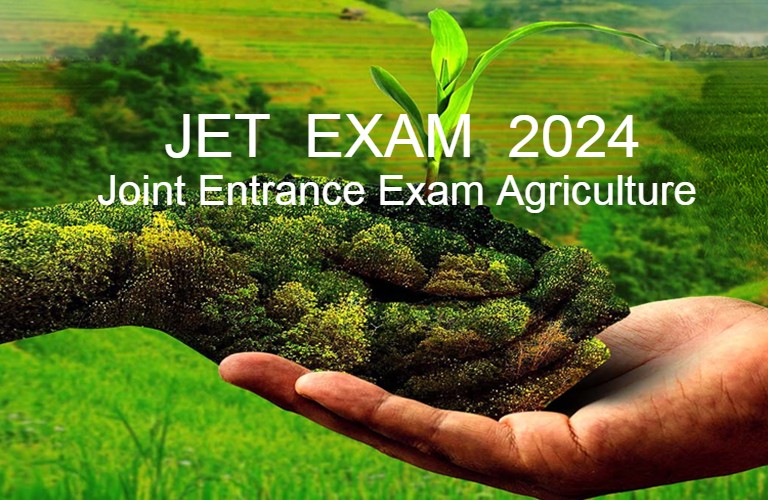ENVIRONMENTAL STUDIES-307
ENVIRONMENTAL STUDIES – 307 SYLLABUS FOR CLASS 12
ENVIRONMENTAL STUDIES-307
Note:
There will be one Question Paper which will have 50 questions out of which 40 questions need to be attempted.
1. Human Beings and Nature
(i) Modern schools of ecological thought.
(ii) Deep ecology (Gary Snyder, Earth First) vs.shallow ecology.
(iii) Stewardship of land (e.g. Wendell Berry).
(iv) Social ecology [Marxist environmentalismand socialist ecology (Barry Commoner)].
(v) Feminism.
(vi) Green Politics (e.g. Germany and England).
(vii) Sustainable Development.
Modern schools of ecological thought;definition and basic understanding of DeepEcology as opposed to Shallow Ecology; Stewardship, Social Ecology – Marxist environmentalism and Socialist Ecology, Eco feminism, Green political movements of Germany and England and Sustainable Development (basic concepts).
World Wide Fund for Nature – organisation, mission, strategy for conservation.
Greenpeace – organisation, mission statement, core values, objectives and strategy.
2. Population and Conservation Ecology
(i) Population dynamics: factors causing population change (birth, death, immigration and emigration); relation between the factors; age structure and its significance; population pyramids; survivorship curves; three general shapes r and K strategies.
Factors causing population change (birth, death, immigration and emigration); relation between the factors; Age structure and its significance; Population Pyramids –interpretation and implications. Rate of change of population – the three general shapes of Survivorship Curves, r and K strategies and differences between the two.
(ii) Human populations (Malthusian model and demographic transition).
Definition of Carrying Capacity; Malthusian view: concept of ‘over-population’ and shortage of resources; Questioning Malthus. Population Growth vs. DisparateConsumption of resources within and amongst nations. Definition and understanding of Demographic Transition; Factors influencing demographic transition.
Population Regulation: growth without regulation (exponential); simple population regulation (logistic growth curve); factors regulating population size (space, food andwater, territories, predators, weather and climate, parasite and diseases, disasters and self-regulation). Basic understanding of the Exponential growth curve (J – shaped) and Logistic growth curve (S – shaped); Factors regulatingpopulation size (space, food and water, territories, predators, weather and climate, parasite and diseases, disasters and self-regulation).
ENVIRONMENTAL STUDIES-307
Human population control: family planning; education; economic growth; status of women.
Strategies for human population control with emphasis on women’s empowerment. (Details of methods of family planning not required.)
(iii) Threats to the ecosystem: habitat destruction; genetic erosion; loss of diversity; expanding agriculture; impound water; waste from human societies; increasing humanconsumption. Only a brief understanding of the causes and consequences of threats to provisioning and regulatory functions of the ecosystem with suitable examples.
(iv) Conservation: importance; the critical state of Indian forests; conflicts surrounding forested areas – populations and tribals and their rights
– tourism – poaching – roads – development projects – dams; scientific forestry and its limitations; social forestry; the role of the forest department; NGOs; joint forestry management; wild life – sanctuaries, conservation and management in India; Project Tiger as a case study in conservation. Definition of: Conservation, in situ and ex situconservation. Importance of Conservation.
In-situ conservation: Wildlife sanctuaries,National parks, Biosphere reserves (definition, objectives, features, advantages and disadvantages).
Ex-situ conservation: zoos, aquaria, plant collection (objectives, features, advantages and
disadvantages).
Conflicts in managing and conserving Forests: India’s forest cover, issues concerning people living in and around forests with particular reference to tribal rights; threats to forests: poaching, developmental projects like roads and dams, over exploitation of forest resources (direct and indirect).
The role of the forest department and NGOsin managing forests.
Some management measures: scientific forestry, social forestry (various types of social forestry), Joint Forestry Management (JFM), ecotourism.
Definition, scope, advantages and disadvantages of each of the above.
Project Tiger as a case study in conservation: Origin, aims, and objectives, successes, failures.
3. Monitoring Pollution
(i) Pollution monitoring.
Primary and secondary pollutants.Importance of monitoring air pollutionincluding Ambient Air Quality Monitoring (gaseous and particulate). Concept of carbon credits and carbon trading in regulating emissions. Causes for excessive vehicular pollution and various steps taken to regulate pollution-emission standards for new vehicles,implementation of CNG programme,inspection & maintenance programme for in-use vehicles, phasing out of old commercialvehicles and promotion of public transport.
ENVIRONMENTAL STUDIES-307
(ii) Monitoring the atmosphere: techniques.
Monitoring at emission source and of ambientair quality, criteria for monitoring stations, types of stations, number of stations,frequency of data collection, characteristicsof ambient air sampling, basic consideration for sampling (to be dealt with in brief). Classification of techniques- manual andinstrumental. ManualPassive samplers, High Volume Samplers and Bubbler Systems. Instrumental-photometric techniquesNDIR,Chemiluminescence – principle and use.
(iii) International and national air qualitystandards.
National Ambient Air Quality Monitoring (NAAQM); the main functions of the Central Pollution Board and the State Pollution Control Board, objectives of air quality standards, New name of NAAQM, NationalAir Monitoring Programme (NAMP)objectives of the NAMP.
Definition of air quality standards and importance; National air quality standards for gases/particulate matter covered under WHO guidelines.
(iv) Water testing: indicators of water quality.
Indicators (electrical conductivity, turbidity, pH, dissolved oxygen, faecal waste, temperature, hardness, nitrates and sulphates)the significance of each and their interpretations. B.O.D. and C.O.D., theoretical concept only (lab work for better understanding and not for testing)
(v) Soil testing: indicators of soil type and qualityand laboratory work.
Soil indicators- the characteristics of a good soil indicator, the three basic types of soilindicators- biological, physical and chemical, two examples of each. The information provided by each of these types of indicators. Definitions, effects and experiments to find out soil respiration, soil pH, soil aggregate, infiltration rate and simple methods of controlling each of these.
4. Third World Development
(i) Urban-rural divide: urbanisation – push andpull factors; consequences on rural and urban sectors; future trends and projections. Causes of migration – push and pull factors, consequences on rural and urban areas and ways to reduce migration. Future trends and projections.
(ii) A critical appraisal of conventional paradigm of development from the viewpoints of sustainability, environmental impact andequity.Definition of Development. An understanding that development has become synonymous with growth. This approach has the following impacts on theenvironment:
(a) Ignoring negative environmental impacts;
(b) Changing patternsof resource use due to market pressures;
(c) Overuse and exploitation of resources;
(d) Diversion of scarce resources to luxurygoods;
(e) Disparate access to resources;
(f) Increasing wastes and pollution.
The above to be explained with suitableexamples.
ENVIRONMENTAL STUDIES-307
(iii) A case study of Gandhian approach in termsof its aims and processes.
Local self-governance – basic principles behind village policy, Antoday, Sarvoday, Panchayati Raj; local self-sufficiency, local markets and environmental sustainability. Village as the basis of development; promotion of cottage industries and intermediate technologies; focus on employment. The above to be contrasted with today’s paradigm of growth.
(iv) Urban environmental planning andmanagement: problems of sanitation; water management; transport; energy; air quality; housing; constraints (economic, political) in tackling the problems; inapplicability of solutions that have worked in the First World and the need for indigenous approach to urbanenvironment.
A basic understanding of the following urban environmental problems: problems of sanitation, water management, transport, energy; air quality and housing.
Awareness of some indigenous solutions:Rainwater harvesting, garbage segregation,composting, energy from solid and liquid wastes, sewage management (dry toilets, Decentralized Water Management System (DEWATS) Features of new urbanism, goals of smart growth. The following examples of urban planning and management from the third world to be studied:
Bogota – Bolivia (Traffic Management);
Cuba (Urban agriculture using organicmethods);
Curitiba – Brazil (Traffic planning andurban renewal using innovative measures);
Cochabamba – (Water management and protests against privatisation of water supply).
5. Sustainable Agriculture
(i) Traditional Agriculture in India: irrigation systems; crop varieties; techniques for maintaining soil fertility; impact of colonialism; Indian agriculture at independence – food scarcity – food import – need for increasing production – the need for land reform; green revolution – HYVs – fertilizers – pesticides – large irrigation projects (dams); critical appraisal of the green revolution from the viewpoints of agro-bio diversity; soil health; ecological impact of pesticides; energy (petroleum and petrochemicals); ability to reach the poorer sections of the rural communities; sustainability – need for sustainable agriculture – characteristics for sustainable agriculture; techniques of water soil and pest management.
Definition of the following terms: traditional agriculture, natural farming, organic agriculture, modern agriculture (use of hybrid seeds, high yielding varieties, chemical fertilizers and pesticides), gene revolution (genetically modified seeds) and sustainable agriculture.
Irrigation systems:
Macro vs micro irrigation systems – canal irrigation/dam as compared to sprinkler/ drip/ trickle drip/dug wells. Basic features, advantages and disadvantages of each kind. Traditional rainwater harvesting- tankas, khadins, ahar, pynes, zings, johads and eris (suitability of each type in the particular region).
Features of pre-colonial agriculture in India: growing for sustenance rather than market; multi-cropping,
ENVIRONMENTAL STUDIES-307
management of soil health, diversity in seed. Colonial influence: punitive taxation, commercial crops for export and British industry, devaluation of sustainable traditional practices. Bengal famine. Comparative study of pre-colonial, colonial and post- colonial agriculture and theirimpact.
Green Revolution: Origin (food scarcity – food import – need for increasing production).
Basic principles of Green Revolution- Development of High Yielding Varieties (HYV); introduction of fertilizers and pesticides; mono cropping.
Environmental, social and economic impacts -advantages and disadvantages (from the viewpoints of agrobio diversity; soil health; ecological impact of pesticides; energy use; input costs; benefits to small and medium farmers, community level and household level food security).
Land reform – need, advantages, failures and successes.
Elements of sustainable agriculture: Mixed farming, mixed cropping, inter-cropping, croprotation, use of sustainable practices of water soil and pest management for improving soil fertility (organic fertilizers, biofertilizers,green manure, with two examples) and pest control (bio pesticides). Integrated Pest Management (IPM); eating local foods
Management of agricultural produce: Storage; Food preservation-different methods like use of low temperatures, hightemperatures, drying, canning, preservation by salt and sugar. Transportation of Food.
Food processing – Definition, food preservation, packaging, grading.
Food adulteration and Food additives-definitions; types of adulteration, harmful effects of adulteration.
Quality Marks – ISI (Indian StandardInstitute); AGMARK (Agricultural Marketing);
FPO(Fruit Product Order) – abrief explanation only.
(ii) Food: the twin problems of production and access; food situation in the world; integrated and sustainable
approach to food security for the Third World. Food Security.
Meaning of Food Security, need for food security. The problems in attaining foodsecurity – those of
production, storage andaccess. Integrated and sustainable approach to food security for the Third World
including working for environmental sustainability and social and economic sustainability through land
reform, credit support to farmers, marketsupport to farmers, inadequacies in the present marketing
system, ways to improvemarketing system, improving access to food, ownership of seeds.
An understanding that national level food security may not translate into household and community level
food security or long term environmental sustainability unless the above factors are addressed. Main
features of the Food Security Law 2013.
6. Environmental and Natural Resource Economics
(i) Definition: resources; scarcity and growth; natural resource accounting.
Classification of natural resources – on the basis of origin (abiotic and biotic), on thebasis of renewability
(renewable and non- renewable), on the basis of development(potential and actual), on the basis of
distribution (ubiquitous and localized); scarcity and growth, natural resource accounting.
Classification of resources as renewable and non-renewable.
Definition, basic principles, advantages and disadvantages of Physical accounting.
















![PUBLIC NOTICE [CUET (UG)] – 2025 for Admission to Undergraduate Programmes in Central Universities/Participating Universities (State/ Deemed/Private) – reg.](https://collegeidea.in/blog/wp-content/uploads/2025/03/National-Eligibilitl-Icst-NIIT-as-an-llntrancc-fcst-for-Admission-to-Ph.D.-2.png)




